A new study reports that during Pleistocene cold stages, when CO2 concentrations dipped below 200 ppm, Arctic Siberia had much more fertile soil and productive vegetation than exists today. Extensive grassland ecosystems could sustain year-round grazers: horses, mammoths, bison. Today this region’s large herbivores must be fed by humans to secure survival due to extremely cold, grassless winters.
As recently as 20,000 to 17,000 years ago, Pleistocene wild horses grazed on grass year-round in the Arctic (North Slope, Alaska).
Today, “horses need human assistance to overwinter in the far North because there is generally little they can eat, and what there is, is deeply buried by snow” (Guthrie and Stoker, 1990).
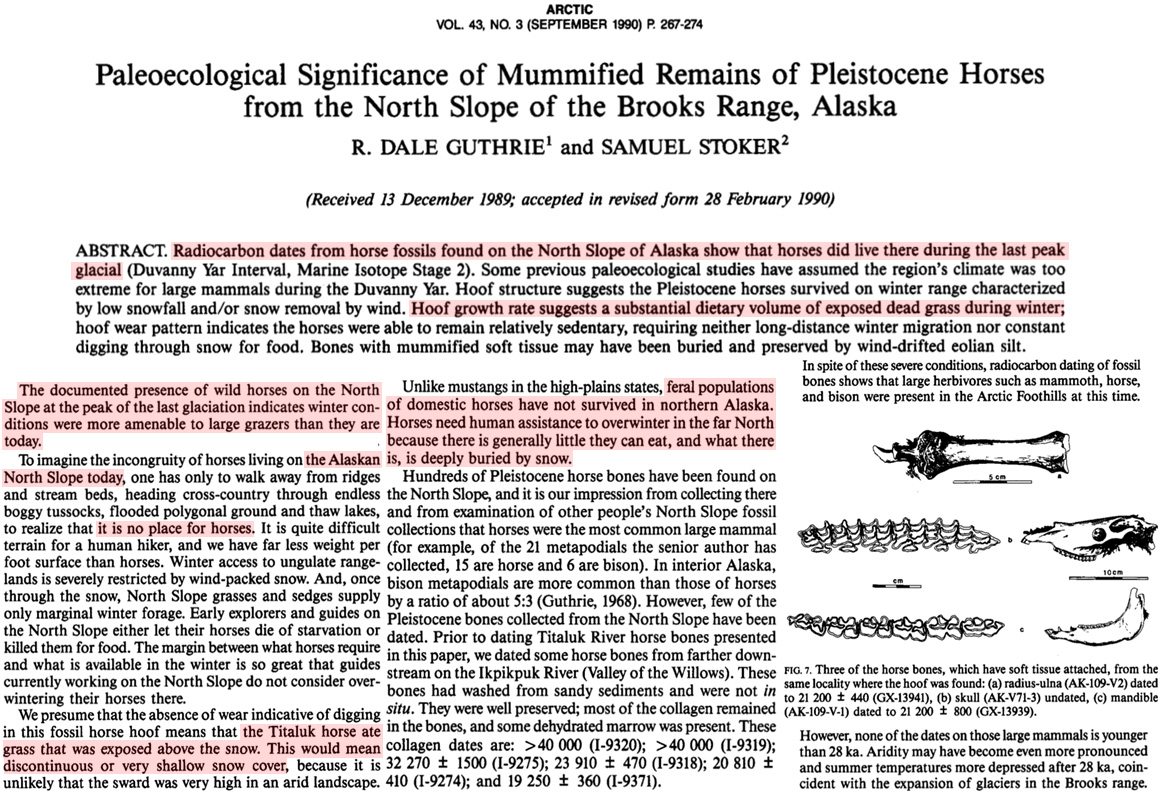
Image Source: Guthrie and Stoker, 1990
This was a period of time – a Pleistocene cold stage – when summer temperatures were actually “higher here than they are today” (Kuzmina et al., 2019) even though modern CO2 levels are over 400 ppm and Pleistocene cold stages had ~180 ppm CO2 levels.

Image Source: Kuzmina et al., 2019
In Arctic Siberia, mammoths grazed on grass year-round on Wrangel Island (71°N) until just 3700 years ago. At that time the Siberian Arctic was warm enough and the soil fertile enough to sustain expansive grasslands. Now, due to a much colder climate, it cannot.
The grass available to sustain such large animals throughout summer and winter needed to have been quite substantial. A conservative estimate is that a small mammoth required 25 kg of grass per day to survive (Bryson et al., 2010). This is over 9 tonnes of grass per year, per animal.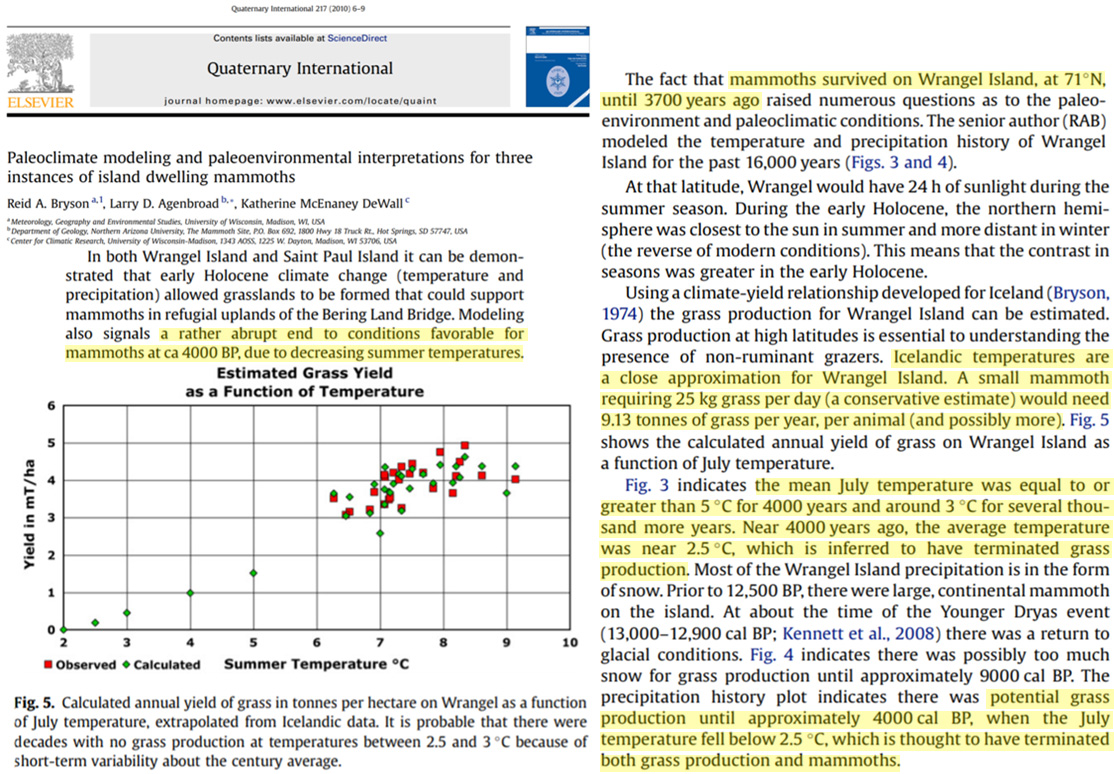
Image Source: Bryson et al., 2010
A new study (Reinecke et al., 2021) further emphasizes the Pleistocene cold stage vegetation “must have consisted of open grassland” and that the productivity of the vegetation “should have been relatively high compared to current conditions to support high densities of large herbivores.”
Further, “soils should have been more fertile than today in the arctic” during these Pleistocene cold stages.
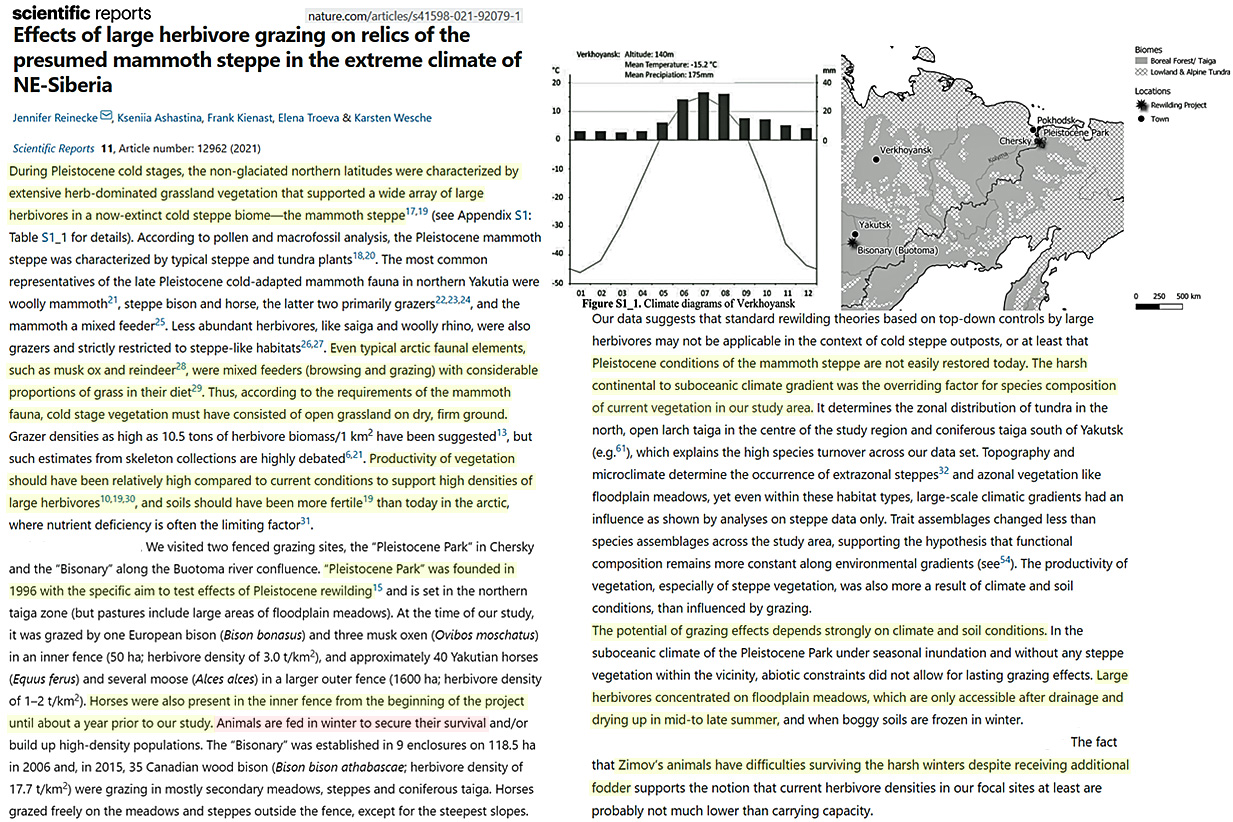
Image Source: Reinecke et al., 2021
The study documents recent attempts to reintroduce large grazers like horses and bison to the Siberian Arctic (called “rewilding”) at “Pleistocene Park,” founded in 1996. However, the fertile soils and extensive grassland vegetation during Pleistocene cold stages “are not easily restored” in today’s frigid climates and harsh winters. For example, today’s October to March temperatures average about -30 to -45°C in Verkhoyansk, a location described as “the most miserable place in the world” to live.
Horses and bison could survive on their own, grazing on grass throughout the year, during the apparently milder arctic winters of the Pleistocene cold stages. Today, however, the large herbivores at Pleistocene Park must be fed by humans in winter to survive. And the animals still “have difficulties surviving the harsh winters despite receiving additional fodder.”
It is interesting that we are told modern climate conditions in the Arctic are so warm (due to high CO2 concentrations) they are endangering the fauna that live there. It would appear the exact opposite is more likely true.
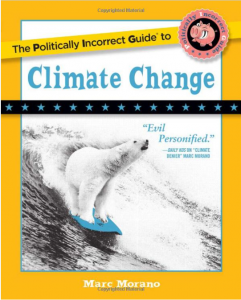
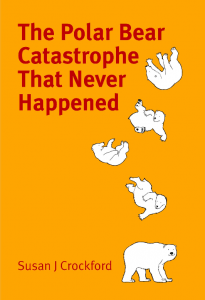
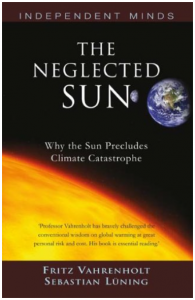
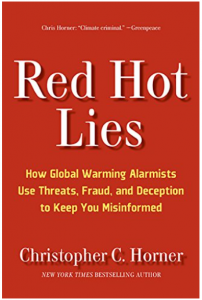

Imagine how much methane those herbivores must have burped into the atmosphere…….oh the climate horror…….
See Gangadhar Tilak ‘Arctic Home of the Vedas’ . Mahatma Gandhi called him “The Maker of Modern India” .
https://www.amazon.de/-/en/Bal-Gangadhar-Tilak/dp/1907166343
With POLE PRECESSION Tilak accurately determined the calendar today used in India (Hindi festivals) to originate north of 66degN at that time. Talk given to standing ovation in 1902, England. The calendar only makes sense above 66N .
Not just horses, but people thrived there, and migrated south as the arctic flooded, to Asia, India and Europe. Hence the Indo-European language group. AFAIK horse was meat at that time.
speculating about the not so recent past doesn’t seem so different to speculating about the future. Both endeavors utilize assumptions, which may, or may not be correct. I suspect more than likely, not correct.
Do you think the horse remains dated to 17,000 to 20,000 years ago found in the Arctic are speculation?
How did horses survive in winter at that time?
How did mammoths – which need 25 kg of grass a day at least to survive – last all the way until 3700 years ago in the Arctic?
Kenneth,
It’s not the remains, it’s the assumptions which go into arriving at dates which is the problem. There is ample evidence the Earth was different in the past. But how long ago is where so much speculation comes in.
So you have a problem with carbon dating that puts horses in the Arctic during the Last Glacial Maximum?
https://journalhosting.ucalgary.ca/index.php/arctic/article/view/64675/48589
That’s right Kenneth, there are problems with all the dating methods used. They are all based on many assumptions which can not be tested. The experience of the Mt St Helen’s eruption has shown Rock dating for one example is clearly flawed. Rocks formed during the eruption being given ages from some hundreds of thousands to many millions of years. Then there are so many examples from this one eruption which necessarily should cause the long age paradigm to be seriously questioned.
[…] Large Herbivores Grazed On Grass Year-Round In The Arctic When CO2 Was 180 ppm. Now They Cannot. […]